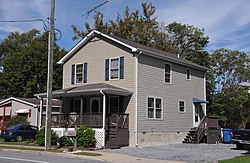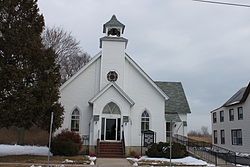Dover Air Force Base
1941 establishments in DelawareAirfields of the United States Army Air Forces in DelawareAirports in DelawareBases of the United States Air ForceCensus-designated places in Delaware ... and 10 more
Census-designated places in Kent County, DelawareDover Air Force BaseHistoric American Buildings Survey in DelawareMilitary Superfund sitesMilitary facilities on the National Register of Historic Places in DelawareMilitary installations in DelawareNational Register of Historic Places in Dover, DelawareSpace Shuttle Emergency Landing SitesSuperfund sites in DelawareUse mdy dates from July 2023

Dover Air Force Base or Dover AFB (IATA: DOV, ICAO: KDOV, FAA LID: DOV) is a United States Air Force (USAF) base under the operational control of Air Mobility Command (AMC), located 2 miles (3.2 km) southeast of the city of Dover, Delaware. The 436th Airlift Wing is the host wing and runs the busiest and largest air freight terminal in the Department of Defense.
Excerpt from the Wikipedia article Dover Air Force Base (License: CC BY-SA 3.0, Authors, Images).Dover Air Force Base
Rydal Circle,
Geographical coordinates (GPS) Address External links Nearby Places Show on map
Geographical coordinates (GPS)
| Latitude | Longitude |
|---|---|
| N 39.128333333333 ° | E -75.464722222222 ° |
Address
Dover Air Force Base
Rydal Circle
19902
Delaware, United States
Open on Google Maps







